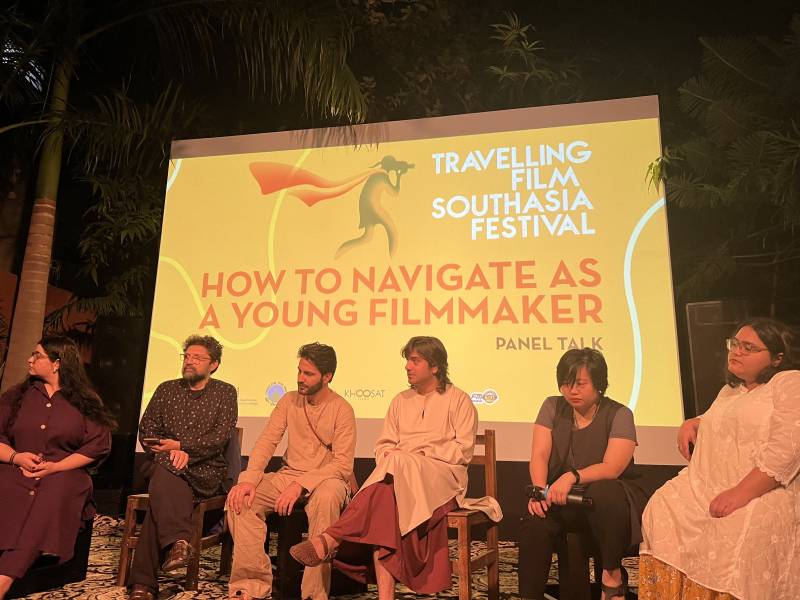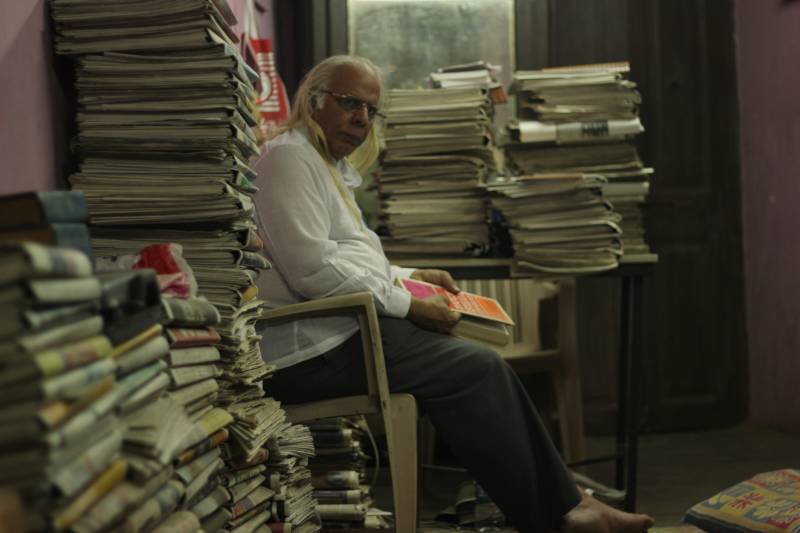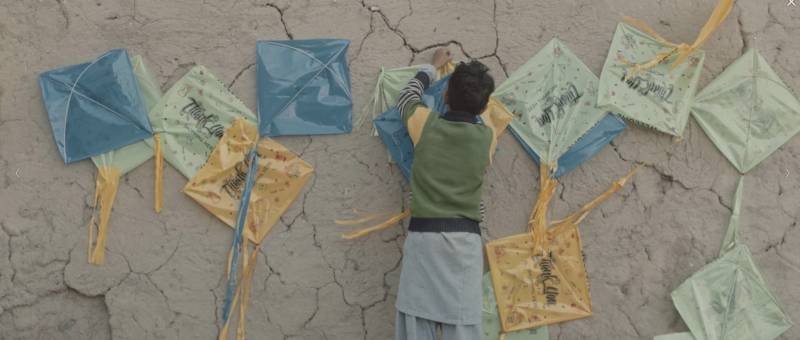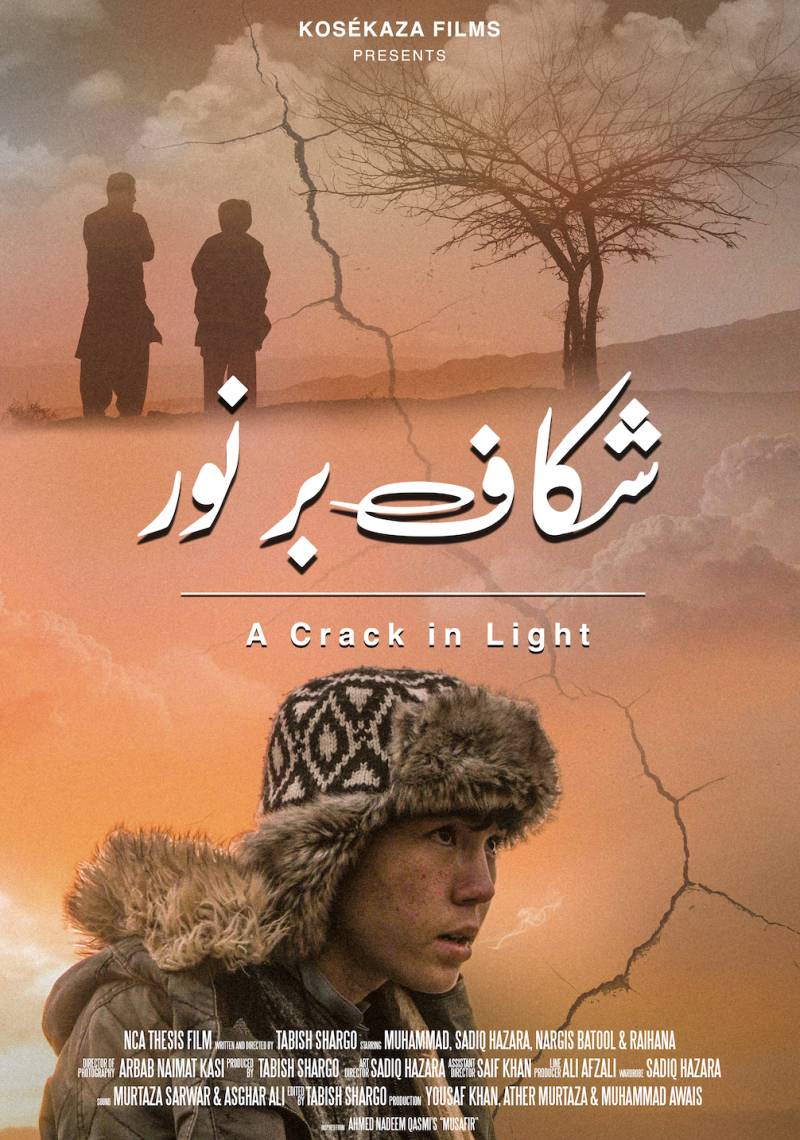
Travelling Film Festival South Asia was a three-day event, held from the 22nd of September till its finale on the 24th of September, Sunday. I want to introduce you to what it hopes to attain through its interactions in the South Asian sphere; a region connected geographically, yet gripped by political rifts that intensify with every passing year. You know the experience – the news and print media seem to be overflowing with animus parroted by public officials. We see the exact opposite play out when we see citizens of these states interact with each other through literature, media and art. That is exactly what the Travelling Film Festival South Asia (TFSA) under its parent organization Film South Asia, hopes to achieve.
Mr. Kanak Mani Dixit in his closing remarks for Day 2 of the Festival put it most aptly: “There is a marked lack of empathy people have for Pakistanis – they prefer to conflate the State with the citizens. I digress, we need to see more stories about the thrills and challenges of being a Pakistani. The world beckons– the more complex a society, the more stories to tell.”
The first Film South Asia festival was held in Kathmandu, in September of 1997. Since then, they have held a biennial ‘mother festival’ at Kathmandu; after which, a selection of films is packaged and toured regionally and globally. This campaign, according to TFSA’s mission statement, is “to promote and popularise South Asian documentaries” and “stops at more than 20 international venues between the parent FSA festivals that are held every two years in Kathmandu.”
I attended a film screening titled “Moon on the Man,” a documentary film directed by Prince Shah. I went through his portfolio and the amount of work he has been involved in later. I was impressed with Shah’s portfolio, with him having been an assistant director on projects such as Mission Impossible, Talaash and Gully Boy. He has also won several awards for his independent, indie films “See You On The Other Side”, and “A Better Bargain.”

I think even as an author, one who has written in academia, news and fiction, I lack the words to capture the essence of Moon on the Man. The film starts off with a character that has an almost visceral air of innocence to him, and joy: Praklawn.
I smiled, remembering my own grandfather and his stories of the pre-partition era. We all have a Praklawn in our life– filled with gusto about life, full to the brim with stories that long to find oxygen and breathe into the mundanity of everyday life. He spins these stories, about being the youngest freedom fighter for India and finding out his parents and siblings have been martyred in the riots that came with Partition– for me, it tied into the conversation that laments the “sacrifices” we make for our states that innately translate us into being slaughtered for the glory of our nation-states.
We get to know Praklawn as a human, with his head full of white hair, almost as glorious as his stories and go on a journey with him. We seem to know Parklawn, his past with Guru Dutt whom he claims he ghostwrote “Bombay Meri Jaan” for, and Sir Ian Flemming, whom he met in his imposed exiled in Miami, USA.
At one point we start doubting what he claims to be his truth, and our journey is mirrored by two spunky protagonists – Aasif, a writer in the film industry, and Wadood, an aspiring filmmaker. They argue, they berate, and they yearn for a conclusion. We are introduced to child actor of the yesteryear, Sailesh. He talks about his golden past, his wealth and how he was robbed of it in sharp, accented English. He holds a mirror to Praklawn – they are both men stuck in their own reality.
One of the monologues by Wadood stayed with me– “Everybody at some level functions like Praklawn… constructs his own reality. His world is fascinating to him because it is his personal reality.”
Towards the end, we see the titular protagonists reach completely different points in their lives than they started off from. It is as if their reality morphs. If our reality is constantly morphing, then what really is delusion? The lack of evidence as Aasif described it perhaps? What separates us from being Sailesh or Praklawn?
Reading Prince Shah’s Director’s statement later gave me further insight into the intricacies– “...our focus shifted from making a narrow statement on illusions of materialism, ambitions & glamour to the larger problem of the subjectivity of human reality. Keeping the film as real as it can get was the sole aim, but one device I decided to add to the film, which is the only non-fictional aspect was ‘mirror man’. This age-old technique was used since most people are so used to noticing themselves in the mirror, not till they see their reflections in an unanticipated bizarre setting, does one actually take note of the cliché ‘looking into the mirror’.”
If the director’s aim was to make me laugh, make me cry, and question existence in the most Camus-esque essence, then I did indeed find myself feeling the full spectrum of emotions in the span of an hour in this brilliantly penned docu-film.
I had the chance to get into conversation with Farjad Nabi, famed Pakistani writer, film producer, director, cinematographer and documentary maker. He has made masterpieces such “Zinda-Bhaag” and “Nusrat Has Left the Building”. I also talked to Pawas Manandhar, a program manager for the South Asia Trust, the parent organisation to Film South Asia as well as its research wing, Research Institute of South Asian Exchange.
Farjad shared with me several bits of wisdom about filmmaking and the South Asian indie film industry. He talked about how he has been helping Film South Asia, which is a non-commercial entity, hold this festival in Lahore. It was held in 1998 for the first time, and then in 2000, and 2003 in HRCP. After a break during COVID, it was revived again with the help of Olomopolo.
Farjad explained: “The vision of Film South Asia is to bring South Asia closer. And since the people cannot meet, they can meet through the films. We are so cut off from the rest of South Asia while being physically so close. We aim to bring this region closer together through films, to foster cultural understanding and sensitivities.”
When I questioned how he envisioned the media industry and the hurdles it faced due to growing censorship and worsening sociopolitical circumstances, he explained: “The people are the same. They have the same desire to connect. Film is always collaborative, and I do hope for there to be a platform where these conversations can manifest in person.”
The conversation with Pawas was very candid – he started by introducing his role as a program manager and his cultural background. I asked him what had been the driving force behind this venture, and he mused a bit before he summed up his journey: “I got a degree in Global Affairs and Public Policy. However, I came to the realisation that public policy is not exactly made with research in mind. I changed tracks to focus more on research in general. We aim to bring more of the South Asian identity towards the public consciousness.”
Lengthy papers and academia create an echo chamber– it is through softer mediums such as art, literature, art, film and documentaries that we escape it. “We have very valid differences. So it's like establishing cultural familiarities, but also showcasing the distinctions we have as our own people.”
In some of his last comments, I questioned Pawas about whether he saw geopolitical and sociopolitical issues tending towards a positive trajectory in the future. His response sums up the lasting impact of cross-border conflicts: “It saddens me that I can't be more positive, the only way we can resolve or mitigate some of the effects of climate change in South Asia is through regionalism. But I also think that that is ripe for people to take advantage of these sentiments, to be more separatist. So it doesn't really fill me with a lot of optimism.”
I then watched the screening for “B FOR NAAO”, set during the rise of the Taliban terror attacks in ex-FATA Parachinar, Pakistan, directed by the award-winning filmmaker, and NCA and New York Film Academy graduate, Roohi Kashfi. More than half of the crew were locals from Parachinar, and the movie is entirely written in Pashto.
I felt connected to the very young, bright-eyed child protagonist, Payeem, and his goat, Naoo. They prance about, always on an adventure in the Parachinar region– nestled in the Kurram Valley, surrounded by rugged mountains and hills. Parachinar is an area significantly affected by sectarian rifts and violence that permeated every bit of life there for the locals. This beautiful region was left financially and emotionally bereft as an after-effect of the terror the Taliban brought to it.
We see Payeem and Naao’s love; in the midst of the void created by war and bloodshed. His father is a laborer, struggling to put him through school. Payeem’s mother appears as a shadow, an afterthought, which Roohi shared with me, was meant to depict the cultural notion of women being almost invisible in the patriarchal society. We see the innocence that encapsulates Payeem’s childhood experience slowly dispel.
Little Payeem buys shopping bags to sell them and earn money. When that leaves him bitter and humiliated, he runs off with Naao into the mountainscape. “What kind of friend are you, Naao!” he exclaims, “you can’t even protect me when I’m being berated!”
It is then as if a beam of light on the horizon, he spots a kite stuck in electricity lines– scooping those shopping bags, he builds from them makeshift kites to sell. As a cheerful Payeem returns home, he finds he has the opportunities he was striving for; at the expense of losing the most significant relationship he had.

I think what struck me most was seeing on screen a depiction of the Pushtoon people by a person from that region. Most often, it is people that have no knowledge of the culture, language and customs. They depict a disingenuous picture of the scenario in a language that is not theirs, and benefit from this redundant depiction of the Pushtoon people as savages. We see it all the time on television; with badly done accents, Klashinkovs and a saviour marching to “re-educate” these ‘barbarians.’ It is overdone, tiring, and offensive. This film in its duration, was full of metaphors, gems, and an emotional overtone that was so strong that re-telling the story to my mother moved her to tears.
Roohi shared with me how the depictions of gun culture seemed to be central to every narrative around the FATA region. He wanted to depict a story through Payeem’s character about how, despite the war-torn landscape, Payeem’s family wants him to be educated, to lift the pen and not the gun. The kite stands as a depiction of freedom; freedom for FATA from these negative influences. The beauty of this film lies in the subtleties of the metaphors that define it.
The last screening for the day was Tabish Shargo’s “Shikaaf Barr Noor” (“A Crack in the Light”), and I am positively sure it is one of my favourite works to come from a South Asian filmmaker. The opening sequence starts with a music sequence that grounds you to the reality depicted on screen, with rising highs and sombre, dark undertones of low. As soon as the movie begins, with the depiction of a tortoise sticking its head from under its shell, you know something is fundamentally awry; a sense of foreshadowing grips you, even during the opening conversation between a boy and his mother, set in the picturesque rugged mountains of Quetta, marked by snowcapped peaks, skies that transcend, evolve and melt together like they are in dilemma about the internalised predicaments of the characters.
At one point, looking up at the screen and the star-studded skies depicted, I echoed a Persian couplet to a friend Agarr Firdaus barr-roye zameen ast, hameen asto, hameen asto, hameen ast.” (“If there is heaven on earth, it is this, it is this, it is this.)
In my experience with theatre, drama, and literature, I have seen many depictions of guilt, grief and the religious dogma of fate versus predestination– Sophocles’ Oedipus Rex, Satan in Paradise Lost, Euripedes’ Medea. It is an age-long question that has plagued the very nerve and tendons of human existence, yet this film falls into the most refreshing depictions of it. It is marked by recurring physical manifestations that reestablish the theme– the tortoise, the image of a goat being slaughtered, the sombre music of a flute, the ring that the child protagonist wears as a memorandum of his father, a letter encased in a white shroud, and a lover defeated. I couldn’t help but wonder– where does guilt leave us? Are we a person by the end of the Ouroboros called guilt consuming us, leaving us ripe with nostalgia and sorrow, threatening to rip us apart at the seams?
I feel as if I truly can not encapsulate the visual experience Shikaff Barr Noor puts a viewer through in words – it is the only film I didn’t write notes for because the slightest tinge of the sky, the musical score, the warmth of the fire and the landscape rooted in magical realism reminiscent of Gabriel Garcia Marquez’s “One Hundred Years of Solitude” can’t objectively be put into words.

In a world so broken, you try to piece together your sentiments and bring to life a coherent explanation for why there is some secondary force, magic, and god at play defining our ultimate destiny. This film excels in this regard.
In conversation with Tabish, he talked about how metaphors were pertinent to the movie but he wanted the viewers to find these for themselves. He talked about how he wanted the tale to find a home in his own hometown, Quetta, weaved into the “tapestry of our culture and the rhythms of Hazargi.” He further talked about the significance of the tortoise; a gruff creature, one that is destined to a long life – the animal, is a stand-in for the characters’ guilt. When flipped on its back, it dies from the weight of its own selfhood. “My ultimate aspiration was to conclude the film, not with finality, but with the spark of another film igniting in the minds of the audience.”
Shikaff Barr Noor is a movie that will resonate with you for a while; reminiscent of a defeated tortoise, struggling on its back, trying to gain semblance of its own weight.
One of the last segments was a panel discussion, moderated by Farjad Nabi, with the filmmakers I mentioned above, as well as Zoya Hassan, (who has been in the costume team for Kamli and Joyland), Moiz Tirmizi with his first feature film, “Barzakh” (renowned for his work in styling and art direction), Haseb Rehman, (creator of “Rest in Paper”), Aiza Mustabeen, (director of “Udeekan”) and Vicky Zhuang Yi-Yin.
The discussion focused on the film industry as a career. It was agreed that in Pakistan, it is not the most lucrative industry; being an independent artist comes with the most extensive challenges. All the panellists stressed upon two features necessary to be a successful independent filmmaker; to find financial freedom alongside your endeavours, and be multifaceted.
Someone asked a question that really struck me: “How much is luck a part of cinematography in filmmaking?” The panel reached a consensus– if you are not prepared, even nature will not aid you in finding the perfect shots. It is using luck to your advantage when you arrive prepared; for the worst and the best. You know how to appropriately budget your work so you have enough saved for post-production, publicity and screenings as well.
I feel South Asian filmmakers have the stories, the ideas and the talent to put their best foot forward and showcase to the world stories of actual people from our region; away from the rose-tinted lenses. It is just the act of actually allowing such collaborations to happen and not letting our geopolitical circumstances subsume the love we hold for each out. Film South Asia is an endeavour that allows for this to happen. Many more ventures should be undertaken to represent our stories to the world. To many, many more years of our film and military industries growing and encapsulating our lived experiences.

